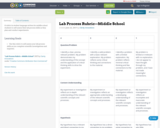
A rubric in student language written for middle school students to self-assess their lab process skills as they plan and conduct experiments.
- Subject:
- Applied Science
- Life Science
- Physical Science
- Material Type:
- Assessment
- Date Added:
- 06/22/2017

A rubric in student language written for middle school students to self-assess their lab process skills as they plan and conduct experiments.
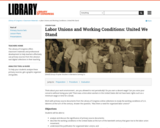
Students use Library of Congress primary sources to study the working conditions of American laborers at the turn of the century.

This course introduces experimental chemistry for students who are not majoring in chemistry. The course covers principles and applications of chemical laboratory techniques, including preparation and analysis of chemical materials, measurement of pH, gas and liquid chromatography, visible-ultraviolet spectrophotometry, infrared spectroscopy, nuclear magnetic resonance, mass spectrometry, polarimetry, X-ray diffraction, kinetics, data analysis, and organic synthesis.
Acknowledgements
Dr. Dolhun and Dr. Hewett would like to acknowledge the contributions of past instructors over the years to the development of this course and its materials.
WARNING NOTICE
The experiments described in these materials are potentially hazardous and require a high level of safety training, special facilities and equipment, and supervision by appropriate individuals. You bear the sole responsibility, liability, and risk for the implementation of such safety procedures and measures. MIT shall have no responsibility, liability, or risk for the content or implementation of any of the material presented.
Legal Notice
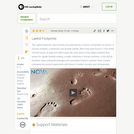
This Evolution video segment describes how the famous track fossils known as the Laetoli footprints might have been formed and what they can reveal about the creatures who left them.

In this Nature video, follow geologists as they retrieve samples from a fresh batch of Kilauea's molten lava.

The purpose of the resource is to investigate changes in the major land cover types of Study Sites by examining Landsat satellite images acquired years apart.

The purpose of the resource is to determine the major land cover type at a Land Cover Sample Site.
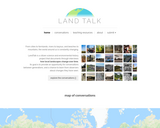
LandTalk is a citizen science and environmental history project that documents through interviews
how local landscapes change over time. Its goal is to provide an opportunity for conversations between generations, and a chance to learn from observers about changes they have seen.
Land Talk is a great exercise to do with students of most ages. Several lesson plans, based on the Next Generation Science and Core Curriculum standards, have been developed to complement the project. While these plans target standards for specific grade levels, they are intended to be adapted to other grades and subjects.
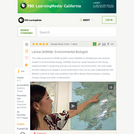
In this video profile produced for Teachers' Domain, meet La'ona DeWilde, an environmental biologist who integrates her Athabascan heritage and her Western scientific training to help remote Alaskan villages address environmental issues.
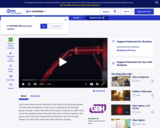
In this video from the Encyclopedia of Physics Demonstrations, observe how a laser beam is trapped in a water jet because the light reflects against the surface of the water.

In this video segment adapted from NOVA, scientist Mike Garcia draws lava samples at the foot of the active Kilauea volcano to see if it is related to its neighboring volcano, Mauna Loa.
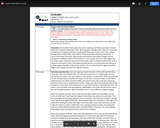
In this lesson, students will learn about how volcanoes are created. Includes video links, discussion, and activity instructions.
NGSS: 2-ESS1-1
Time: 50 minutes
Materials: bucket of clay and toothpicks
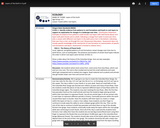
In this lesson students will learn about rock formations and fossils within rock layers. Includes video links, discussion, and activity instructions.
NGSS: 4-ESS1-1
Time: 1 hour
Materials: bucket of clay and plastic animals

The purpose of this resource is to develop a classification system for a set of objects and learn about hierarchical classification systems. Any set of objects, such as insects or rocks, may be used as well.
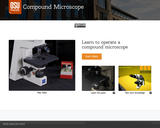
Multi-part open educational resource which includes a video about how to operate a compound microscope, an interactive walk-through of the parts of a microscope, with detailed descriptions, and a self assessment. In addition to these wonderful instructional tools, there is a virtual lab, the "Lettuce Onion Lab" available on the same page.

Learning Acceleration Guidance during School Closures
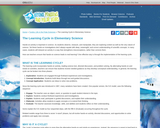
This article provides an overview of learning cycles and how they can enhance student learning in science.
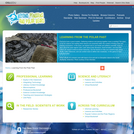
This issue of the free online magazine, Beyond Penguins and Polar Bears, explore how to use fossils and artifacts (scientific clues) to learn about the polar regions' past. Targeted literacy skills include making inferences, and using context clues to define new vocabulary.
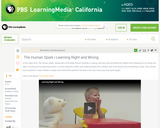
Through scientific research, this video from The Human Spark illustrates how a child’s views of what is right and wrong can be shaped by others.
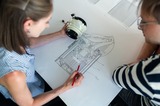
In this activity, students will read an article and create a visual representation of the differences between inventions and innovations. Then, they will choose between two emails to write: one to propose a solution to a global problem and the other to ask questions of a student inventor.